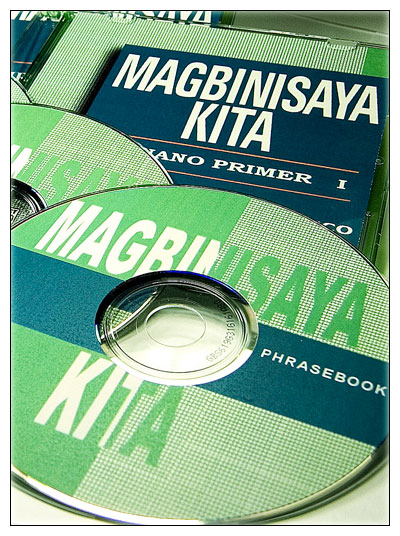
|
|
The Magbinisaya Kita Modules
I. The LanguageBinisaya, which is generally referred to as Bisaya or Cebuano, is one of the major languages in the Philippines. This is spoken in Cebu, Bohol, Negros Oriental, southern Leyte, and in almost all place in Mindanao. (For a linguistic map of the Philippines, please follow this link. II. The ModuleIn this module, Binisaya, Bisaya, and Cebuano are used interchangeably –they mean the same language. This is because the people in Mindanao do not call their language Cebuano, which to them is the language of Cebu. In addition, Bisaya here is not to be misunderstood as the bigger aggrupation of Visayan languages, which includes Cebuano/Binisaya, Waray, Hiligaynon/Ilongo, etc. Jessie Grace U. Rubrico’s Magbinisaya Kita, Module 1 was first printed in 1999. It includes thirteen lessons, four examinations, a glossary, a list of idiomatic expressions and useful phrases, and a simplified compilation of grammar rules and the Cebuano phonology at the end of the module. It treats non-verbal predicates or comments --nominal, locative, benefactive, possessive, temporal, and numeral. It also touches on simple verbal expressions: there is/are; has/have; want/like and need. Approximate study time for this module is 60 hours. Once this module is mastered, the learners are then ready for the second module --verbal predicates or comments-- which they can deal with more confidently. The format is concise and functional. In this 2006 edition, each lesson is introduced with a dialog or a text (1). The Vocabulary section (2) gives the English gloss to the terms used in a particular segment and lists some common and idiomatic expressions therein. The Practice section (3) is designed to initiate the learners into activities that can help them internalize the lessons. The Grammar Notes section (4) attempts to adequately explain the rules, structures or patterns of language use in a much simpler presentation. Section (5) provides exercises toward application of the lesson. The Magbinisaya Kita series includes: Magbinisaya Kita Module 1 (Beginner 1); Magbinisaya Kita Module 2 (Beginner 2); Magbinisaya Kita Module 3 (Intermediate 1); Magbinisaya Kita Module 4 (Intermediate 2); Magbinisaya Kita for Kids; and the Magbinisaya Kita Phrase Book. These modules have been piloted in a one-on-one classroom instruction from 1995 to 1999 with both expatriate and Filipino learners who found the approach effective and accordingly rated it "Excellent." Since 1998, the Magbinisaya Kita Module 1 has been taught to distant learners all over the globe via email tutorials. Some minor "tunings" had been put in place for the distant learners. And serious learners of the language who enrolled in the program have likewise rated the Magbinisaya Kita modules “Excellent.” It is the author's desire that all these modules will help those who are seriously pursuing Cebuano language acquisition. Thus, these modules come with free tutorials and consultations via email. III. The Author : Jessie Grace U. Rubrico, PhDDr. Rubrico has been teaching Cebuano to foreigners and Filipinos alike since 1994. She started with one-on-one- tutorials or tutorials of two or three in a reputable language school in Quezon City. Due to the lack of instructional materials which are light and simple yet functional and easy to learn from without much memorization and mimicking, she developed modules based on the feedbacks of her language learners. This module is the product of her quest for a simpler and easier method of Cebuano language instruction. After some revisions to accommodate suggestions and comments of the learners, Magbinisaya Kita Module 1 was printed in 1999. The Magbinisaya Kita Module 1 underwent some minor revisions in 1998 to cater to distance learners all over the globe. It has reached over a thousand learners from North America, Canada, Europe, Australia, and Asia, including the Philippines. Beside the Magbinisaya Kita series, Dr. Rubrico has also developed pedagogical modules for Cebuano and Ilokano for a prestigious language institution in California, USA. She has also published the Magbinisaya Kita Phrasebook and has completed for publication the Ilokano, Waray, Chavacano, Yakan, and Tausug phrasebooks. She’s presently working on pedagogical modules for other Philippine languages and the compilation of a Cebuano-Visayan- English dictionary. Dr. Rubrico is consultant for Philippine languages to a number of companies in the United States, Canada, and Europe. She develops tests for different levels of proficiency in Philippine languages, manages linguistic and language research and projects, and networks for language practitioners in the Philippines. Back to the Magbinisaya Kita Page |